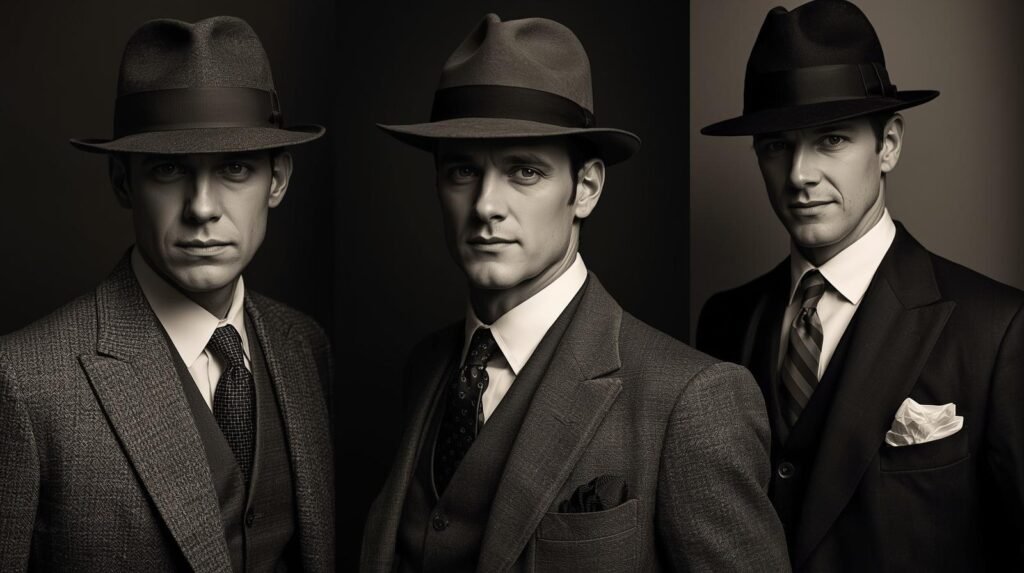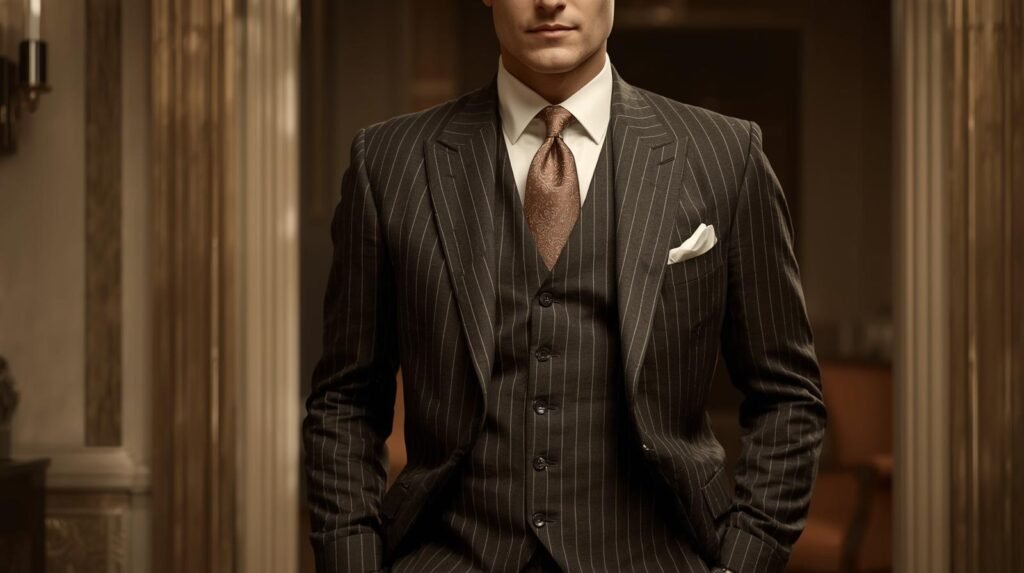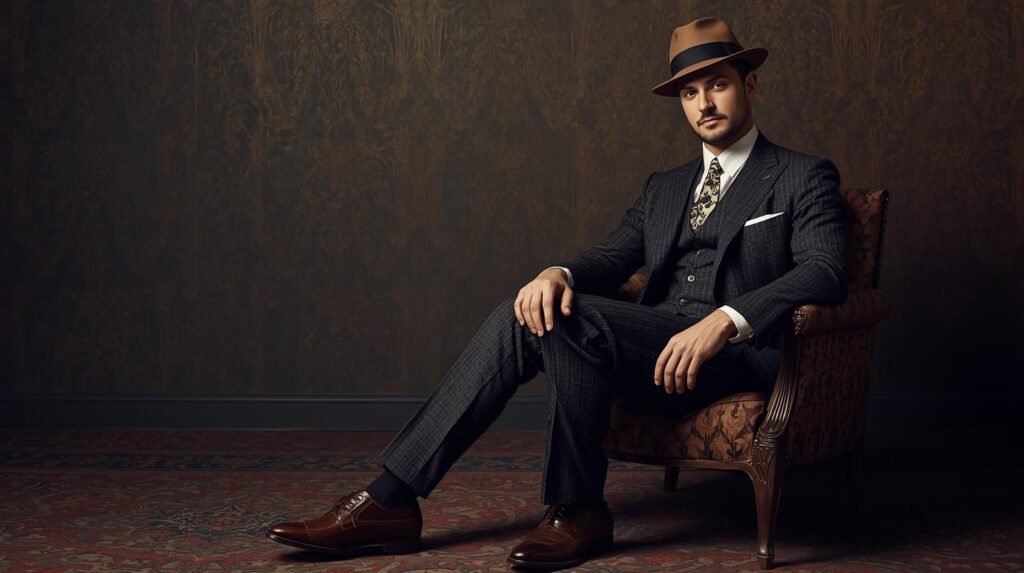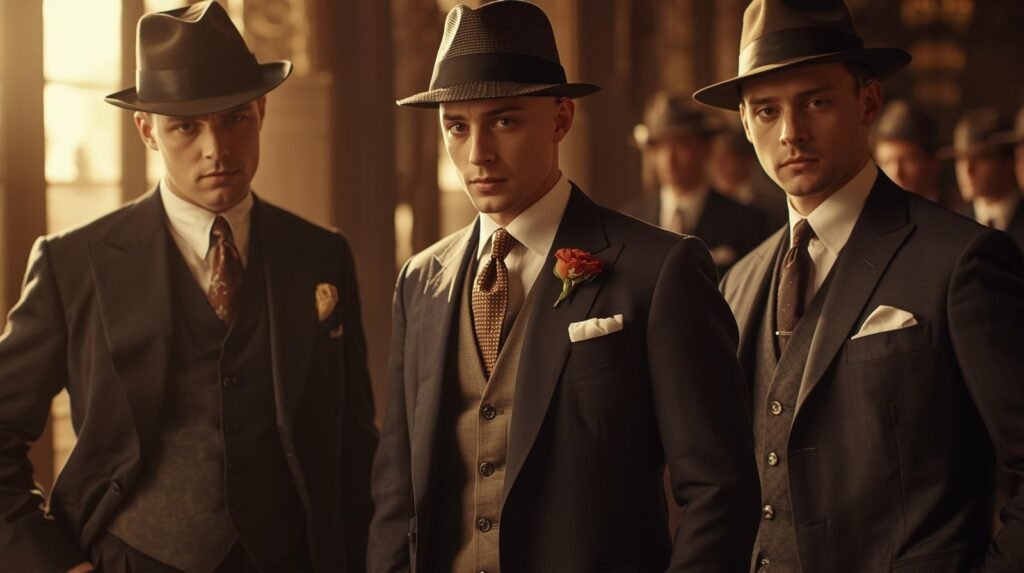The 1920s is remembered as one of the most stylish and transformative decades in men’s fashion. It was a time when the world emerged from the gloom of World War I and stepped into a new age of confidence, prosperity, and creativity. Men’s clothing evolved from stiff Victorian formalities into a symbol of freedom and personality. The “Roaring Twenties” introduced bold tailoring, luxurious fabrics, and modern silhouettes that still inspire fashion designers today.
During this decade, men began to dress not only for function but also for expression. The rise of Hollywood, the Jazz Age, and technological innovations influenced everything—from the suits men wore to the shoes they polished each morning. The 1920s became a golden era for men’s fashion, marking a timeless blend of class and charisma.
The Post-War Shift in Men’s Clothing
Before the 1920s, men’s clothing was conservative, with dark colors and heavy materials dominating wardrobes. After the war, however, the mood changed. Soldiers returned home with a new sense of freedom and appreciation for comfort. Tailors began to design clothing that was lighter, softer, and more relaxed.
Three-piece suits remained the foundation of men’s wardrobes, but they evolved into slimmer, more refined designs. The jackets were shorter, lapels wider, and trousers had a higher waistline with turn-ups (cuffs). Waistcoats were worn snugly under tailored coats, giving men a sharp but easygoing look.
This era also marked the beginning of sportswear influencing everyday fashion. Golf, tennis, and polo became popular pastimes, and their styles—such as knitted sweaters and cardigans—became part of casual wear.
The Influence of Jazz and Urban Culture
The Jazz Age had a massive impact on men’s fashion. Jazz music represented youth, rebellion, and modern life, and young men wanted their clothing to reflect that energy. They rejected old-fashioned stiffness for looser fits and vibrant patterns. The Oxford bag trousers, which were extremely wide-legged, became a symbol of nonconformity among university students and jazz enthusiasts.

Men wore lighter fabrics, brighter colors, and more daring patterns. Checks, stripes, and herringbone designs became common, particularly in casual outfits. The evening look, however, remained elegant—black tuxedos, white shirts, bow ties, and shiny leather shoes defined the sophisticated gentleman.
The Rise of the Modern Suit
The modern suit as we know it today owes much of its identity to the 1920s. The decade emphasized tailored fits that enhanced the male physique without appearing rigid. Jackets were slightly longer than before, with soft shoulders and deep V-shaped fronts. Double-breasted suits gained popularity among businessmen, while single-breasted styles were more casual and youthful.
Fabrics like wool, tweed, and flannel were the most common, offering warmth and structure. During winter, men preferred darker shades like charcoal and navy, while summer suits were often beige, light gray, or cream. This contrast in seasonal wardrobes highlighted the 1920s man’s growing awareness of fashion as a lifestyle choice.
Casual Fashion and Leisurewear
For the first time, men’s fashion was not limited to formalwear. Casual clothing became a vital part of the wardrobe. Sweaters, knitted vests, and soft-collared shirts became weekend essentials. The “Ivy League” style started taking shape with college students wearing blazers, ties, and loafers for semi-casual outings.
Knitwear became especially popular because it was practical and stylish. Cardigans, pullover sweaters, and sleeveless jumpers were worn with shirts and ties, creating a polished yet relaxed look. Linen trousers and lightweight jackets became fashionable during warmer months, especially among travelers and seaside visitors.
Outerwear: A New Symbol of Elegance
The 1920s were also the golden age of outerwear. Overcoats were long, structured, and often made from heavy wool or camel hair. The Chesterfield coat, with its velvet collar, was a favorite among the upper class. Trench coats, introduced during World War I, became fashionable for city men because they were both practical and stylish.
Leather jackets gained recognition thanks to aviators and motorcar enthusiasts. The bomber jacket, first designed for pilots, began to appear in civilian wardrobes. This trend introduced an element of ruggedness to men’s fashion, balancing elegance with masculinity.
Accessories: Defining Details of the 1920s Gentleman
Accessories played a crucial role in defining men’s fashion during this decade. No outfit was complete without a hat. Fedoras, flat caps, and bowler hats were worn daily, often coordinated with the color of the suit. Silk ties and pocket squares added personality, while cufflinks and tie clips reflected refinement.
The pocket watch was a staple accessory, symbolizing punctuality and status. Some men began to wear wristwatches, a trend that grew rapidly after the war. Leather gloves, canes, and scarves were also common among the stylish elite.
Footwear was equally important. Oxford shoes, brogues, and two-tone spectators were must-haves for fashionable men. Every pair was meticulously polished, reflecting the importance of grooming and detail during the 1920s.
Colors, Fabrics, and Patterns
The 1920s brought more variety and creativity to men’s fashion than ever before. While earlier decades focused on black and gray, this era embraced color. Earthy tones like tan, brown, olive, and navy became wardrobe staples. For summer, men favored cream, beige, and white suits made of linen or seersucker.
Patterns became more expressive too. Pinstripes were popular in business suits, while plaids and houndstooth were preferred for casual wear. These designs added depth and individuality to each outfit, setting the 1920s apart as a decade of experimentation.

The Hollywood Effect
Cinema had a major influence on fashion in the 1920s. Actors like Rudolph Valentino and Clark Gable became global style icons. Their tailored suits, slicked-back hair, and confident demeanor set new standards of masculinity. Movie theaters became spaces where men observed trends and sought inspiration for their own wardrobes.
Hollywood glamorized the idea of the “gentleman,” emphasizing clean lines, luxurious fabrics, and subtle elegance. This influence extended beyond America, shaping men’s fashion in Europe and beyond.
Grooming and Hairstyles
Hairstyles in the 1920s were neat, slick, and disciplined. The most popular look was the “slick back,” achieved using pomade or oil-based hair products. Side parts and short cuts were also trendy, emphasizing symmetry and sharpness.
Facial hair was minimal; most men preferred a clean shave. The focus on grooming became an integral part of a man’s image. Barbershops flourished, and products like cologne, shaving cream, and hair tonic became everyday essentials.
Fashion for Every Class
The 1920s also reflected class distinctions through clothing. The upper class wore fine tailored suits, silk ties, and expensive accessories. Middle-class men followed similar trends but opted for affordable fabrics. Working-class men adopted simpler, more durable clothing—denim overalls, wool jackets, and flat caps for practicality.
Despite differences in wealth, every man aimed to look respectable. The decade’s widespread prosperity made quality fashion more accessible, allowing men from all walks of life to embrace style.
Men’s Fashion Icons of the 1920s
Some of the most influential style icons of this era included:
- Rudolph Valentino, known for his romantic, sophisticated charm
- Duke of Windsor, who popularized soft tailoring and patterned fabrics
- Charlie Chaplin, whose signature bowler hat and cane became iconic
These figures helped spread new trends worldwide and inspired generations of designers who followed.

1920s Fashion in Modern Times
Modern fashion continues to draw heavily from 1920s designs. Tailored suits, wide-leg trousers, and vintage-inspired accessories remain timeless. Brands like Ralph Lauren and Brooks Brothers have recreated many styles from this period, blending them with contemporary cuts.
Even street fashion today echoes the 1920s aesthetic. The return of suspenders, bow ties, and retro footwear shows that the charm of that era still resonates with modern audiences.
FAQs About Men’s Fashion from the 1920s
Q: What were the signature elements of men’s 1920s fashion?
A: High-waisted trousers, three-piece suits, fedoras, and polished shoes were key elements. Accessories like pocket watches and silk ties completed the look.
Q: Were 1920s suits comfortable?
A: Yes. Compared to earlier decades, the 1920s introduced softer fabrics and relaxed tailoring, making suits easier to wear daily.
Q: How did sportswear influence 1920s menswear?
A: Sports like golf and tennis made knitted sweaters, cardigans, and blazers fashionable for casual occasions.
Q: Why is 1920s men’s fashion still popular today?
A: The designs combined elegance with individuality. Modern fashion continues to borrow 1920s tailoring, fabrics, and silhouettes because they represent timeless sophistication.
Q: How can someone recreate a 1920s-inspired outfit?
A: Choose a fitted suit, add suspenders and a waistcoat, wear a fedora or flat cap, and complete the look with classic leather shoes.
Final Thoughts
The 1920s was more than a decade of changing clothes—it was an era that redefined what it meant to be stylish. Men discovered the art of dressing with purpose and confidence. Every suit, tie, and hat carried a story of freedom, optimism, and modern identity.
Even today, the influence of 1920s menswear can be seen in fashion runways, films, and street styles. It represents a perfect balance between sophistication and simplicity. To wear 1920s-inspired fashion is to embrace a timeless legacy of elegance that continues to shape men’s style around the world.
Read More: For more insights and modern fashion updates, visit Webfreen Fashion.

